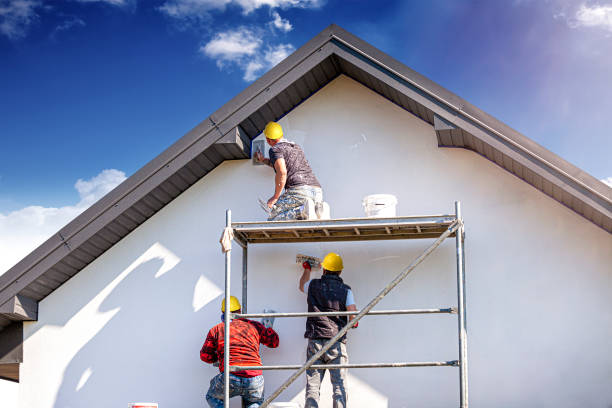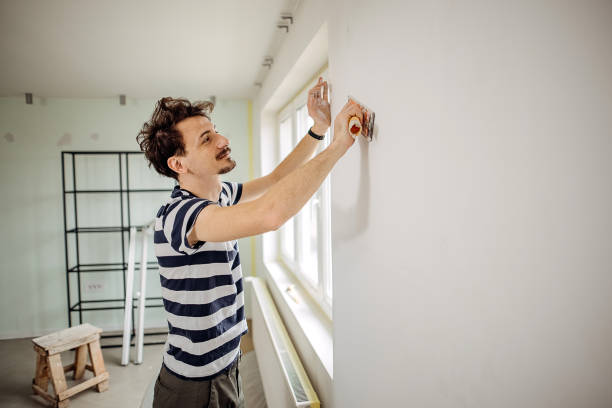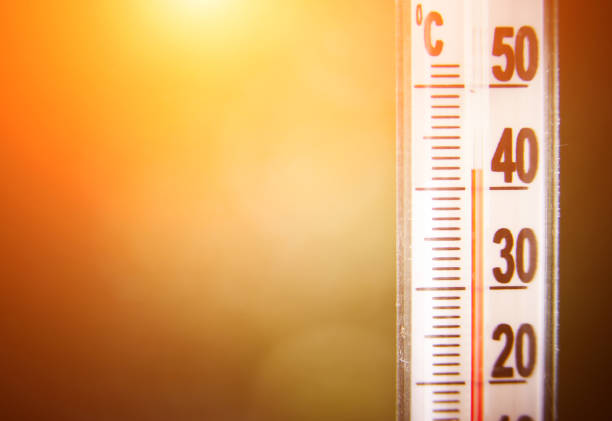
Plaster is one of the oldest and most commonly used construction materials. It’s easy to work with, cheap, and has excellent insulating properties. Plastering projects are almost always improved by the addition of plaster, which can be used to finish walls, ceilings, or other surfaces.
If you’re planning on adding some plaster to your home or office soon, you’ll need to know how long it will take for the different layers of plaster to dry. Unlike other materials such as drywall, plaster doesn’t have a standard drying time.
This is because there are so many different variations on plaster that require different amounts of drying time. Thankfully, we have a helpful blog post that lists the average drying times for most common kinds of plaster:
The first variation on plaster that we’ll look at is plaster with no lime. As you can probably guess from the name, this kind of plaster doesn’t contain any lime. This is actually a very common kind of plaster, especially in commercial buildings.
As you may have guessed, this variation on plaster is ideal for areas where there is a lot of moisture. Lime is a hygroscopic substance that attracts water molecules from the air.
This is useful in dry areas, but in a high-humidity environment, it can lead to mold and other problems. This variation on plaster is also ideal for people who are allergic to lime. While lime can be avoided in all kinds of plaster, it’s particularly easy to avoid in plaster without lime. This plaster takes around 2-4 weeks to dry.
Stucco is a type of plaster that is often used as a wall finish. It’s made of a mix of sand, cement, water, and fibrous materials such as paper and hay.
Because of these fibrous materials, stucco is usually considered a fibrous plaster rather than a solid plaster. Stucco is a very sturdy and durable finish. It’s also highly water-resistant, which makes it ideal for areas that are likely to be exposed to water.
It’s actually one of the best finishes for areas that are often exposed to water, such as near the sea or a lake. Stucco is a fairly thick mixture that takes longer to dry than many other kinds of plaster. You’ll typically need around 10 hours for a stucco base layer to dry.
A solid plaster is a mix of lime, sand, and water that is poured on a wall or ceiling. Once it hardens, it forms a very sturdy and durable surface. Because lime is hygroscopic and attracts water, a lime plaster is a wet plaster that is not fully dry.
A wet plaster takes longer to dry than a dry plaster. You can speed up the drying time of a wet plaster by using fans to circulate the air around the room. You’ll usually need around 24 hours for a wet lime plaster to dry.
Dry plaster is made without any lime. This makes it a very durable and long-lasting plaster finish. However, it also makes it harder to work with. A dry plaster is a much thicker substance than a lime plaster.
This is because dry plasters have a lower water content than lime plasters. This means that dry plasters take longer to dry, and you must be more careful when working with them. A dry plaster will take between 36 and 48 hours to dry.
Concrete plaster is a very strong and durable plaster that is often used as a finishing layer in industrial buildings. It’s a very popular choice in areas that are likely to be exposed to water.
Concrete plaster is also known as gunite. This name comes from the way that it’s applied: the mixture is poured onto the wall and then smoothed out using a gunite wheel (a large wheel with a metal rim).
Concrete plaster is a very thick substance that requires a long time to dry. You’ll need at least seven days for the concrete plaster to dry.
Before you even consider applying the first layer of plaster, you should make sure the area where you’re working is well-ventilated. Good ventilation is especially important when you’re working with gypsum-based plasters, as they produce a lot of humidity.
If the plaster isn’t allowed to dry properly, it could accumulate moisture and cause damage to the surface you’re working on. If the plaster isn’t allowed to dry properly, it could accumulate moisture and cause damage to the surface you’re working on.
Any furniture you have in the room where you’re working needs to be at least a foot away from the walls, and you should make sure the windows are open to allow fresh air to flow through.

The condition of the walls where you plan on plastering will have a significant impact on drying times. If the walls are smooth and free from dirt, debris and other substances, it’ll be easier for the plaster to stick to the surface and for it to dry.
If the wall is uneven or contains substances like oil or grease, which can prevent the plaster from adhering to the wall, it’ll take longer for that plaster to dry. If the wall is uneven or contains substances like oil or grease, it'll take longer for the plaster to dry.
The best way to prepare the surface is by using a trowel to smooth out uneven patches and applying a coat of joint compound to fill in any cracks or holes in the plaster. Joint compound is a thick, paste-like substance that’s applied with a trowel and allowed to dry.
Once it’s dry, it forms a flexible yet strong seal that’s easy to sand down before applying plaster.
No matter how well the surface is prepared, the plaster won’t adhere to the wall if there isn’t enough adhesion between the two surfaces. Adhesion is a measure of how well two surfaces stick together. When it comes to plaster, there are three types of adhesion: mechanical, chemical and biological.
Mechanical adhesion occurs when the external force applied to both surfaces is enough to hold them together. For example, if you place a piece of paper on a table and leave it there, the paper will stay on the table because of the table’s natural adhesive force.
There are two types of chemical adhesion: hydrogen and covalent. Hydrogen adhesion occurs when two dissimilar surfaces come into contact and hydrogen gas is formed between the two. Covalent adhesion, on the other hand, is formed when two similar surfaces react and form a bond.
Biological adhesion, on the other hand, is the process by which bacteria and other organisms attach themselves to a surface and begin growing there. While biological adhesion is important in the natural world, it can be harmful when applied to the construction industry.

The temperature in the room where you’re working can have an impact on how quickly the plaster dries. If the air is too cold, the plaster won’t dry as quickly. Although it might seem like a good idea to keep the room warm to quicken the drying process, you also need to keep in mind that the plaster should be dried with consistent, low heat.
That way, the plaster will dry evenly and won’t be more likely to crack due to sudden and drastic temperature changes. If the air is too cold, the plaster won't dry as quickly. It can take anywhere from a day to a week, depending on the thickness of the plaster and the temperature of the room where it’s drying.
The best way to keep the room’s temperature consistent is to use a space heater. It’s important to keep the heater away from the plaster, though, as excessive heat can damage it.
There are two main factors that affect drying times for plaster: its thickness and the amount of humidity in the air. If you apply a thicker layer of plaster, it’ll take longer to dry. The amount of humidity in the air can affect the drying times for plaster, depending on how thick your layer is.
And if you’re working in a very humid environment, you might need to apply some type of dehumidifier to keep the air drier. Plaster drying times depend on the thickness of the plaster and the amount of humidity in the air. The thicker the layer of plaster you apply, the longer it will take to dry.
If you apply a very thick layer of plaster, it could take days or weeks to fully dry. Even though drying times for plaster can vary, it’s still important to plan ahead and not start painting before the plaster has completely dried.
By knowing how drying times for plaster work, you can better prepare for the project and get it finished quicker.
Frequently Asked Questions
Wet plaster is plaster that is not completely dry. This means that it still has water inside of it and is very easy to break. Wet plaster is best used in frames and frameworks, while dry plaster is used for finishing walls.
Always use dry plaster to finish a wall. Wet plaster is not strong enough to withstand the daily use of a wall, and it will crumble easily.
There is no exact way to know when wet plaster is dry enough to use. You need to keep in mind that wet plaster is very fragile and easy to break. This means that it is best to wait until the plaster is completely dry before using it.
Summing Up: How long does it take for plaster to dry?
As you can see, there are many different types of plaster, each of which has its own drying time. To ensure that you get the desired results from your plaster project, you’ll need to carefully plan your schedule around the drying times.
If you want your plaster to look great and last for a long time, it’s important to make sure that it’s fully dried before painting over it or applying another layer of plaster. Depending on the type of plaster you use, this can take anywhere from a few days to a few weeks.
When it comes to finishing your walls, there are a number of options. One of the most traditional methods is to apply plaster, which is easy to do and provides a nice finish. Plaster is applied in layers, with each layer being allowed to dry before the next one is applied.
Drying times for plaster can vary depending on a number of factors. In order to get the job done as quickly as possible, you need to make sure the area is well-ventilated and the wall is free from any oil or grease. You should also make sure the surface is smooth and free of cracks or other imperfections, and you should use a thick layer of plaster.
If you’re looking to take on a plastering project in your NYC home, trust our experts at Pristine Painters. Contact us to get an estimate for expert plaster repairs + painting services.